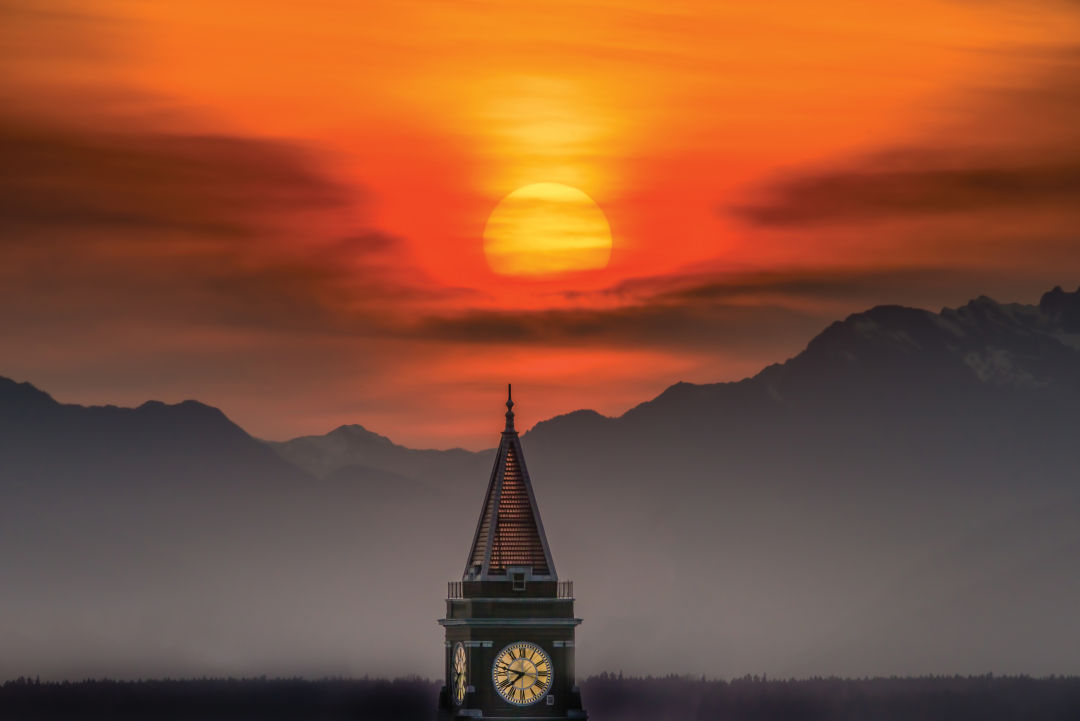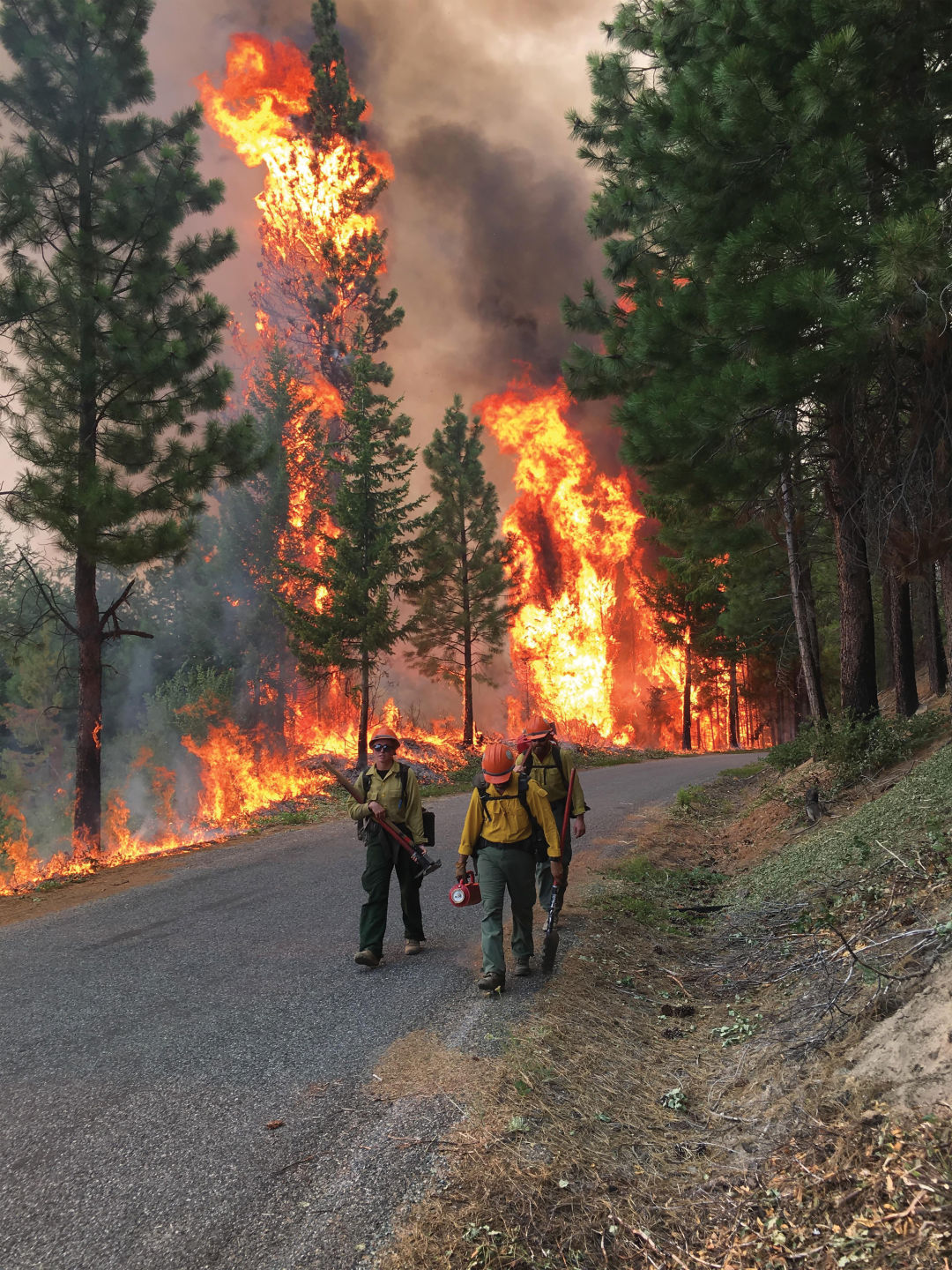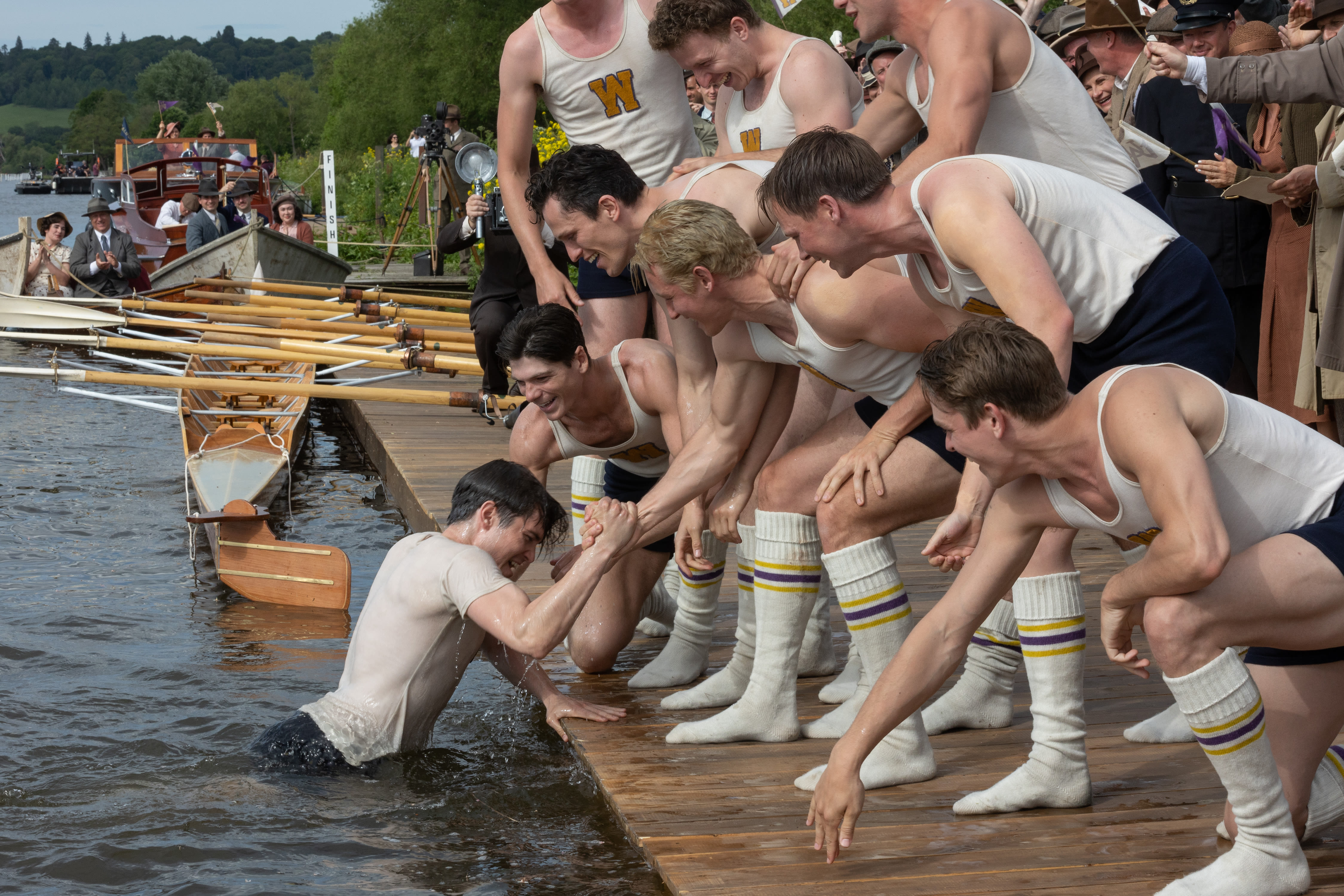Washington’s Wildfire Season Is Starting Earlier and Ending Later

Smoke from wildfires colors the sky as the sun sets behind King Street Station.
Image: Sigma Sreedharan
Just before the start of spring, there was a spark. Then another, and another, and another—a fiery harbinger of what’s likely to come. Brush crackled as flames skipped from shrub to shrub, scorching earth that, in previous winters, was wet. This year, though, it was dry—and hot. Uncommonly warm temperatures broke records across western Washington on March 19. In just a few days’ time, firefighters had responded to 51 wildfires in the state. All but one was west of the Cascades, unusual for the historically wetter region of the state.
Soon after, the National Interagency Fire Center announced that western Washington would likely have significant fire potential through at least July. Across the country, wildfire season is starting earlier and ending later. But even considering that, 2019 is noteworthy.
“Alarming” is Janet Pearce’s word for it. She’s the spokesperson for the state’s Department of Natural Resources, Washington’s largest on-call fire department. The year’s weather patterns summed up: too little rain, several parched regions in the state already in the middle of a drought by early spring. Heading into the summer, there’s also a greater chance western Washington will face drier-than-normal conditions.
Hilary Franz, commissioner of public lands at the Department of Natural Resources, manages approximately six million acres in Washington. In October 2018, she asked lawmakers to double the agency’s wildfire-fighting budget to $55 million. By the end of 2018, the department had responded to more than 1,800 wild blazes, the most in Washington state history. Nearly 350,000 acres went up in flames statewide. And about 40 percent were west of the mountains, another all-time high.
Here’s another concern: Is this the new normal? “We get that question a lot,” says Andrew Wineke, a spokesperson for the Washington air quality program at the Department of Ecology. “We don’t have a crystal ball, unfortunately.” But, he says, scientists anticipate the number of acres burned in the western United States to double or even triple in the next couple of decades.
“This isn’t the new normal,” Wineke says. “It’s expected to get a lot worse.”
Going forward, research shows climate change will contribute to longer fire seasons in the region, says Crystal Raymond, a forest ecologist and climate adaptation specialist at the University of Washington’s Climate Impacts Group. But because the flurry of fire in March was due to abnormally dry conditions, Raymond says it’s probably an anomaly as far as current patterns are concerned. As the earth gets warmer, springs are actually supposed to get wetter. It’s the summer that should be drier.
However unusually arid it was or not, the Department of Natural Resources has been preparing for the season and training new firefighters since the beginning of the year. But, according to Pearce, the agency is seeking more money in part to try to reduce the number of catastrophic wildfires, not just put them out. Such efforts would include prescribed burns—planned fires to get rid of fuel on forest floors that could increase the intensity of a blaze—and mechanical thinning, clearing out brush that competes with trees for water and sunlight.
Forest management practices, like suppressing fires that once organically burned up brush, have exacerbated our current crisis, says Raymond, especially in eastern Washington where fire suppression has allowed less-hardy trees to flourish. Their presence means fires can spread more easily and are typically more severe.

Firefighters at Cougar Creek in Washington, August 2018.
Image: Courtesy InciWeb
It looked like a fog had fallen on the city last summer. The almost apocalyptic smog that shrouded the skyline drifted down from British Columbia, where fires raged. “Breathing Seattle’s air is as bad as smoking seven cigarettes,” read one headline from August 2018; at one point the city had the worst air pollution in the world. “Seattle is choking on a cloak of wildfire smoke,” another article reported. And then there were the dispatches that confirmed some residents’ worst fears. “Smoky Seattle summers: Expect more of them,” The Seattle Times advised.
Whether smoke will again settle on the Puget Sound this year depends on wildfire conditions and weather, Raymond says. But as fire frequency increases, so does the likelihood of ominous, hazy skies in Seattle.
Within city limits, Seattle is relatively well protected from rampant flames. But as the region grows and more homes are developed in areas encroaching upon wildland, residents there should be aware, and prepared.
“One of the things that gets lost in the conversation is recognition that other factors besides climate contribute to the situation we’re in,” Raymond says. She understands people who want to find a single culprit responsible for a painful problem—worsening wildfires amid droughts and fast-melting snowpacks. But it’s more complicated than just saddling climate change with that blame.
“There are things we can do,” she says, from rethinking forest management to thoughtful development in areas that abut the wilderness. Acknowledging that multiple factors are tangled together is at least a step toward reducing risk. And in that complexity, she sees hope.




